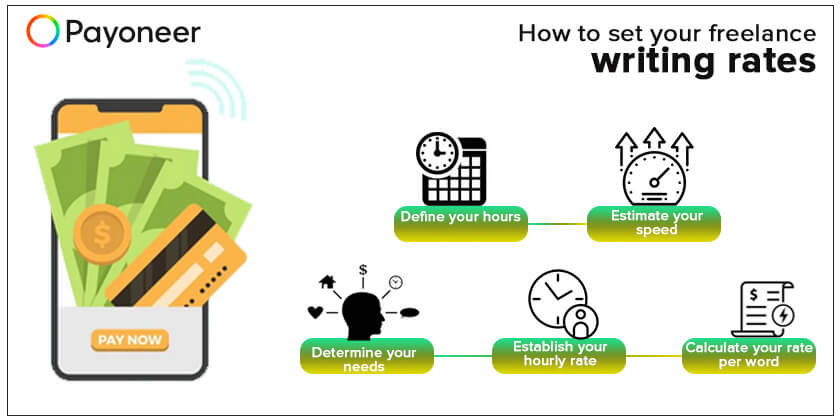
How to set your freelance writing rates
1. Define your hours
It seems simple, but the place to start is determining how many hours you want to work during the month. Be realistic. Is work life balance important to you? Chances are that you won’t be able to work more than 40 hours per week. Are you a stay at home parent looking for part-time income? Define how many hours is your ideal workload and stick to it.
2. Determine your needs
Calculate the amount you need to make each month in order to live comfortably. Consider things like monthly expenses, healthcare, taxes, vacation time and setting aside savings.


3. Establish your hourly rate
When you’re done defining your monthly salary needs, multiply this number by 2 to get your hourly rate rate. The most ideal scenario for writers is to get paid hourly; however, very few clients are willing to work with this model. Although some freelance marketplace offer tools to monitor workflow, your client has no real way of knowing how many hours you have worked and when just starting out with a new client, building trust can be tricky.
Getting paid per word is your second best option. If you know how much time (and effort) it takes you to write one word, you can estimate how much money you need to charge in order to make a profit.
4. Estimate your speed
How many minutes does it takes you to write a 1000 word article? If you don’t know off the top of your head, go ahead and test yourself. Take into account time to research the topic (if necessary) and editing your work. If writing a 1000 word article takes you 40 minutes then this is how you will calculate your speed:
60,000 (60 minutes x 1,000 words) / 40 (the time it takes you to complete 1000 words) = 1500 (words in an hour)
5. Calculate your rate per word
Take your rate per hour and divide it by the number of words you can write in an hour. What you’re left with is your rate per word.
For example, if you want to make $40 per hour, and you can write 1500 words in that time: $40 / 1500 = $0.03 (rounded up from 0.026)
Do you have a a different approach that you’d like to share with the Payoneer community? Let us know in the comments below.




